He has walked the corridors of Oslo City Hall as a Nobel Peace Prize nominee, but by last December he could be found walking the sidewalks of Chicago on a brisk, dark night, his eyes downcast in search of enough loose change to buy food.
As a founder of Las Abejas Civil Society and Maya Vinic coffee co-op, 48-year-old Jose Perez Vazquez has dedicated his life to growing arabica coffee for the specialty coffee market as well as to organizing his people to preserve his Tzotzil Mayan culture and community. As neither of these pursuits provide a person in his position much by way of a dependable livelihood, he has also found himself at times struggling to stave off hunger, unable to afford even a can of black beans.
Finding himself in a down time late last year, with only $18 to his name and with only two years remaining on his 10-year visa, Vazquez slung his dirt-stained backpack filled with the few clothes he owned over his shoulder and exited the Chicago O’Hare International Airport. He had messaged me: “I’m coming to Chicago, I want to live with you. Echa me la mano.”
He had arrived on a one-way ticket from Mexico City that he purchased with a loan from a Jesuit priest, the same friend that had helped him form his pacifist human rights organization in 1992 on the 500-year anniversary of Christopher Columbus’ “discovery” of the “new world.”
Vazquez is the man who inspired me to take on the daily struggle of social entrepreneurship 15 years ago. By the time I came to meet him after his arrival in Chicago, Vazquez appeared sullen and sick, his cheeks sunken into his face to expose the outline of his bones. He had been living off of one small meal a day, his tiny frame betraying the immensity of his personal struggle.
“I didn’t know if I would live or die, but our life was so dire, I had no choice but to try to realize mi sueno,” Vazquez to told me.
Despite these seemingly overwhelming personal circumstances, Vazquez was as ready as ever to take on the present-day struggle faced by his fellow coffee farmers around the world while ushering in a new beginning in association with the company he inspired me to co-create so many years ago, Higher Grounds Trading Co. He was prepared to resume his fight against economic inequality that is driven deeper by the growing thirst for the crop he harvests, perpetrated by people and businesses on the U.S. soil upon which he had now set out to take his fight.
The market imbalance so often found in specialty coffee has led to a kind of generational poverty in Vazquez’s homeland, with difficult conditions now being exacerbated by climate change. Coffee farming in Mexico is predicted to become unviable by the end of the 2020s according to the alarming new report by The Climate Institute. He held faith in the word of his coffee-roasting buyers at Cooperative Coffees that “partner,” “relationship” and “fair, equitable, and direct trade” actually meant what they should.
Migration Is Often By Need, Not Choice
My great grandparents elected to migrate to the United States in search of an improvement over their lives in Italy, Slovenia, and Germany, although they could have survived had they stayed. Vazquez’s journey was to urgently fill his family’s most basic needs for survival. And, like most migrants here in our country, the factors that drive Vazquez’s northward migration were established long before he took his first step anywhere on earth. It started precisely 487 years ago when Spaniard Diego de Mazariegos “founded” Jovel, or San Cristobal de Las Casas as the Spaniards named it, forcing Vazquez’s ancestors into slavery and serfdom.
Public discourse in the U.S. today rarely takes into account the challenges that drive Mexicans reluctantly from their families. It also generally fails to recognize their constant attempts to break free from the very forces that have kept them in poverty for centuries. Coffee provides almost 2 percent of the annual GDP of the richest nation in the world, the United States. Yet as the International Coffee Organization recently declared, “coffee production is not economically sustainable for many producers, and those who can make a profit struggle to cover the costs of establishment and plant renewal.”
Life specifically at the bottom of an unjust, lopsided coffee supply chain was shaped for Vazquez 169 years ago, when Jeronimo Manchinelli planted 1,500 coffee seedlings on his farm in Chiapas, ushering in a new crop. Vazquez’s ancestors worked the plantations of the foreigners, who then brought seeds home to the highlands to plant in the off season. Today, small farms full of Typica, Maragogype, and Bourbon coffee trees farmed by Tzotzil and Tzeltal families dot the highlands throughout Chiapas.
Vazquez’s story always has been unfortunately similar to about 70 percent of the world’s 25 million smallholder coffee farmers. In fact, in many places I’ve traveled, the story is even more grim. His family subsists on the corn and beans they also grow. In a good crop year, the sale of his coffee usually, but not always, covers the basic survival needs of the family.
Counted as they are among the 80.6 percent of Mexico’s indigenous people that live in extreme poverty (according to numbers from the United Nations’ 2015 report on the status of the world’s indigenous peoples), Vazquez’s family lacks access to durable flooring material, clean water and sanitation, schools, and health clinics. These result in a situation of poor health, lowered life expectancy, and decreased education rates.
Today, the average annual per capita income in Vazquez’s home region is a third of the state average at just $3,314, similar to that in Africa’s Ivory Coast. Chiapas has the slowest growing economy of any state in the country, with the lowest GDP per capita. Healthcare, education, and access to potable water are all scarce throughout the indigenous regions.
Lupita, Vazquez’s 16-year-old daughter, had to stop formal education after secondary school. The closest high school is a two-hour drive in Yabteclum, a small town that buzzes with road-worn Volkswagen Combis carting men and women in traditional garb back to their villages after a day at the market. As there’s not a single car in Vazquez’s town, and no formal public transportation, Lupita and her siblings, as with Vazquez and his wife before, cannot continue their education because they simply can’t get there.
In large areas inhabited by the indigenous population that includes many of Mexico’s coffee growers, an education system is virtually nonexistent. Schools are sparse, ill-equipped teachers have limited training, and they rarely speak the native language of the community they serve. Only 27 percent of indigenous children graduated from high school in Mexico in 2014, and the rate of illiteracy is a staggering 44 percent. Only 3 percent have a university education.
Unable to reach a school at all, Lupita instead spends her days assisting her mother, Juanita, in caring for a house of 10 children, some their own and some of family whose lives were shortened by the lack of access to health care. The closest hospital is three hours away in the colonial city of San Cristobal. Chances of death by preventable illness are 181 percent higher in rural indigenous areas than in urban centers in Mexico, and the indigenous live, on average, 5 years less than their fellow Mestizo (of Spanish decent) country folk.
When every last drop of rainwater collected during the rainy system in their rotoplas has been depleted, Lupita helps her mom dig out a small spring, which would appear to a privileged North American as a mud puddle. From there they gather water with which to cook, drink, and clean each day. This daily two-hour ritual is undertaken by about 5 million people in Mexico who do not have access to clean drinking water in their home.
They prepare their corn and beans on an open fire on their dirt floor. With lack of adequate acreage to farm and little money to buy food right now due to the low coffee harvest, Lupita and her siblings have become part of the 44 percent of indigenous children suffering from malnutrition.
At the bottom of the global coffee supply chain, Vazquez and his family are the norm, rather than the exception. Writ large, the poorest 50 percent of the world’s population owns less than 1 percent of the world’s wealth, and that wealth has shrunk by 41 percent in the past five years. Meanwhile, adjusted for inflation, the average consumer price of a cup of coffee is actually less in 2016 than at any time over the past 50 years.
The Birth of Maya Vinic
The cooperative Maya Vinic was founded in 1999 by Vazquez and 500 of his neighbors from seven municipalities in the Chiapan highlands as a direct response to another horror that had befallen them.
“In December 1997, in the town of Acteal — the area where I live — 45 people attending a prayer meeting were shot dead by Mexican paramilitary members. The victims included my friends and family, pregnant women, and children. In response, the Maya Vinic Cooperative was founded as a way for us coffee farmers to protect ourselves, share resources, and make a pledge for peace,” Vazquez explains in a guest blog he penned for Higher Grounds. “Their blood gave us the strength to organize, to face new experiences, and ultimately to found our co-op.”
Since then, Higher Grounds has grown from selling Maya Vinic’s coffee at a farmer’s market, in 2002, to a staff of twenty who roast, package and ship that coffee all over the country. We’ve purchased over 300,000 pounds of coffee from Maya Vinic at a premium above the fair trade, organic minimum. We’ve pursued direct, ethical buying practices in conjunction with development work while also collaborating with other coffee roasters and engaging our consumer network to foster long-term community impact with the co-op.
With other roasters at Cooperative Coffees and consumer donations via On the Ground, our combined efforts have funded the construction of potable water systems in Maya Vinic communities, fed a multitude of refugee families, and provided over $65,000 to combat coffee rust.
On top of that, Higher Grounds also donated $0.15 for every pound purchased prior to the coffee rust hit to help construct a macadamia nut nursery, start a cafe, and build a restaurant.
Hundreds of coffee buyers, consumers, activists, and students from high school and college classes have attended our delegations to Chiapas to participate in skill-building activities and learn about “sustainable” coffee production and “fair and direct” trade. Attendees have become allies who continue to provide project support long after their trip. Nearly a hundred community members are now trained to maintain water systems once they’ve been set up to supply each home.
We’ve provided coffee farmers with skills to improve quality and increase profits, and taught the children of farmers how to play musical instruments and left behind guitars. It all adds up to a multifaceted international relationship that leads to vital dollars in Vazquez’s pocket. “Now, we have been able to build a bridge for direct communication between producers and coffee consumers,” Vazquez wrote. “The good price that we obtain for our coffee translates into profits that we share equally at the end of every harvest season.”
Yet despite what positive impact it would seem like we’ve had, it still hasn’t ultimately corrected the stark realities facing the farmers with whom we profess to be in a “fair and equitable” relationship. On top of the entrenched, longstanding struggle with poverty, I learned that Vazquez was also now scrambling to deal with the very real impact of climate change. It came in the form of “la roya,” or coffee rust, three years ago, and last year it delivered a life-altering blow.
Maya Vinic’s 2015 harvest had been estimated to be 120 tons of exportable coffee, nearly a container of which was designated for Higher Grounds. By the time the harvest rolled around, only 69 tons were collected. Vazquez had already spent two years wracking his brain in an effort to figure out how to get the resources necessary to care for his family as la roya wreaked havoc on his coffee fields. With almost half of his crop destroyed, Vazquez had no choice but to migrate to Mexico City in search of work.
Buyers’ “Relationship” with Origin is Never Static
Vazquez has been a partner at our specialty coffee roasting company, Higher Grounds Trading Co; our relationship with him and Maya Vinic spans the lifetime of our company. I, along with fellow roasters of Cooperative Coffees, had traveled with him throughout the Midwest in 2004. Yet by the time he most recently arrived in the U.S., his meager frame and hushed tones did not match those of the farmer featured in Connected by Coffee, a documentary that followed myself and fellow Co-op Coffees member Matt Earley of Just Coffee Co-op through Central America, visiting our coffee growing partners in 2013 just as la roya reared its wicked head in Nicaragua and began to creep northward.
Vazquez and I have stood before thousands of consumers of Maya Vinic coffee in the 15 years since we began our trade relationship, exposing the importance of supporting equitable models such as ours. On kitchen counters across the country, consumers can see our 12-ounce bag of Maya Vinic coffee and see a picture of Vazquez and me giving each other a high five in his coffee field.
Yet here I was in 2016 sitting beside a man who was clearly not in a healthy relationship with the consumer side of coffee, including with the largest customer of the business he’d founded.
Our relationships and our sustainability initiatives do provide much-needed financing and support for renovation of coffee fields and technical assistance. We purchase coffee at prices above direct trade, fair trade and/or organic premiums, and we put profits back into farmer-led community projects. And yet, as had become so painfully clear to me in my time with Jose Vazquez, these efforts clearly do not necessarily provide livelihoods that support families with some of their most basic needs for survival.
If those coffee farmers in Mexico, or anywhere else, were cherry farmers living in such dire conditions in Traverse City, Mich., the market would not stand for it. Consumers wouldn’t be able to stomach the fact that their hard-working neighbors lived without the most fundamental resources, let alone comforts, they all enjoy.
It was time for me to reevaluate the nature of the top-down “relationship” prevalent in the specialty coffee industry. And it was time to show Vazquez that “sustainability” for Higher Grounds was not simply built upon his ability to produce more coffee.
“I have a dream too, Vazquez,” I told my friend as we finally met. “Maybe you can help me with mine, and I can assist you with yours.”
Little did I know that those words would begin a nine-month adventure that would see us taking on the buyer bias of the U.S. specialty coffee industry, an unprecedented rise of xenophobia in our country, and an international drug cartel, to save the lives of people even less fortunate than Jose Vazquez.
Chris Treter
Chris Treter is the co-founder and director of Higher Grounds Trading Co, an organic coffee roasting company and certified B Corp with a coffee bar in Traverse City, Mich. Chris spends much of his time working in the field with their coffee farming partners and is also founder of On the Ground, a not-for-profit organization dedicated to bringing fresh water, education, and health care to those without.
Comment
2 Comments
Comments are closed.



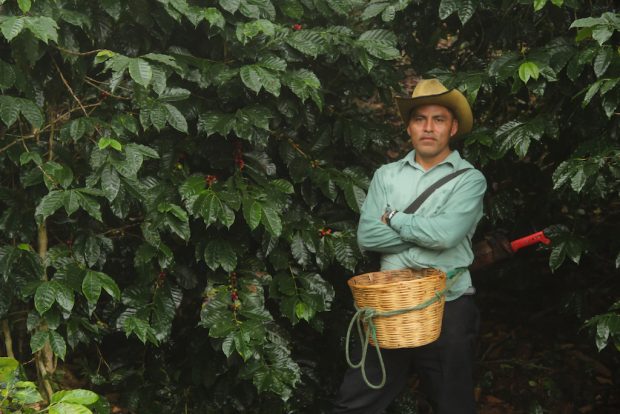
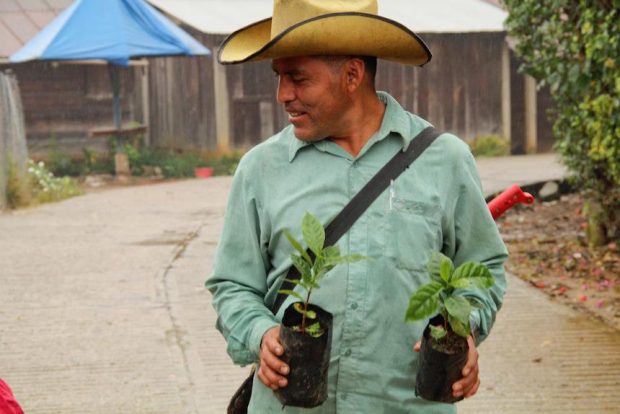
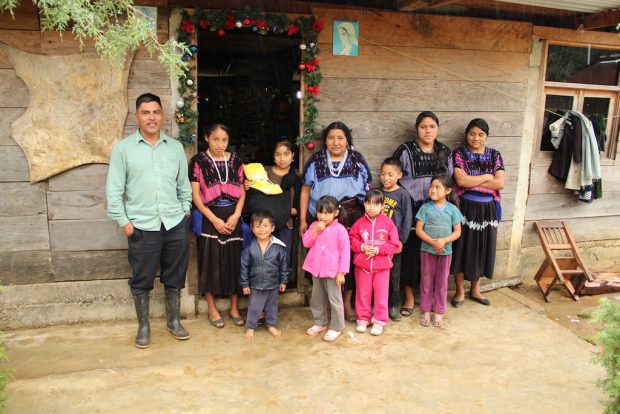
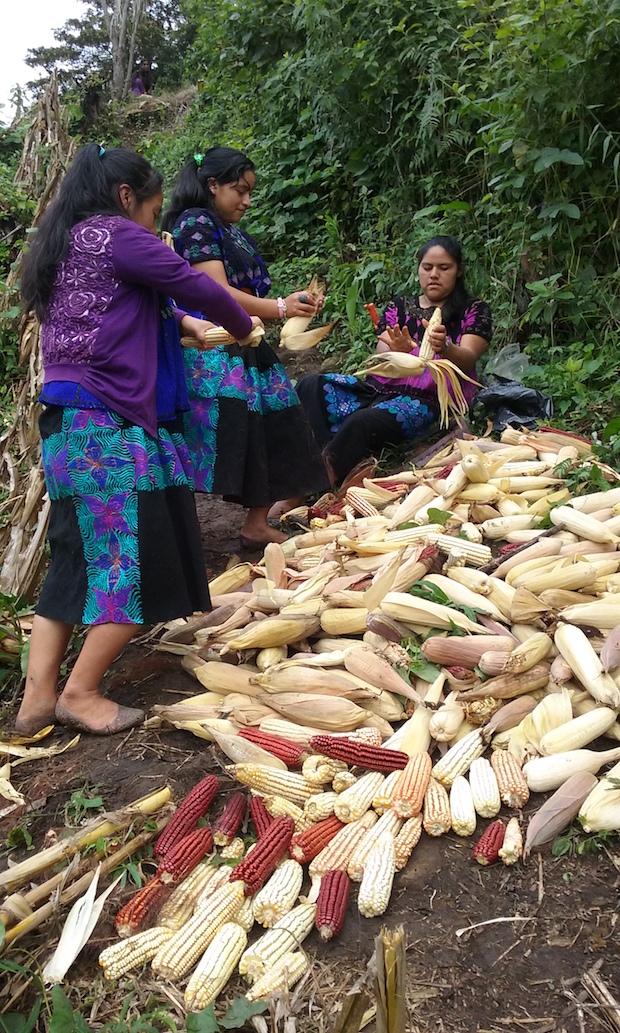

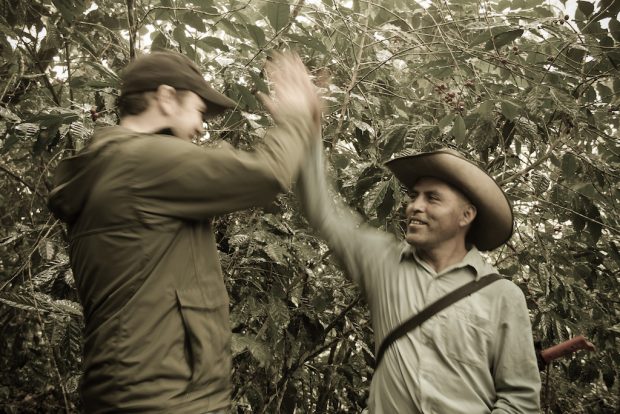



Maybe not the kind of comment you’re after.
The following is an important fact in the history of the development of coffee in the world and needs to be told.
We are a vintage coffee roasting company in Cape Town, South Africa – the first artisanal/micro roaster here and in business for more than twenty years, setting the trend for the future. Being particularly interested in the history of coffee, I came across an old cookery book, “Hilda’s Diary of a Cape Housekeeper” written by Hildagonda Duckett (1902) who tells us about the coffee trees grown in a small fruit orchard behind the old winery building at Groot Constantia, South Africa’s oldest and original wine farm in Constantia, Cape Town – the first coffee grown in South Africa. This is entirely understandable as when the Dutch East India Company broke the Arabs coffee monopoly in the middle of the seventeenth century, all the coffee that was destined for Amsterdam, which became the centre of the coffee world in Europe then, came via Cape Town. Naturally some seeds/seedlings found their way here and were planted. The very reason why Cape Town was established by the Dutch was to create a central supply point for their ships between Europe and the East. Although Cape Town does not have the climate to grow coffee commercially, this is an interesting fact.
This Dutch initiative started the international coffee trade that subsequently spread throughout the world and Cape Town played an integral part in this.
Malcolm Clark (credentials obtainable on the internet)
Director
Caribbean Coffee Co (Pty) Ltd
thank you so much Higher Grounds for your had work and for your impact in farming regions around the world.